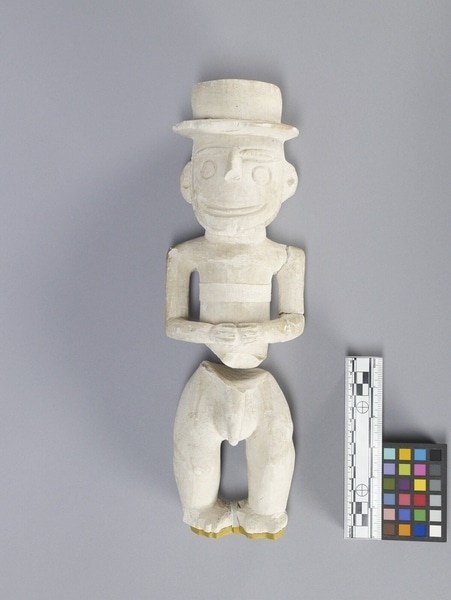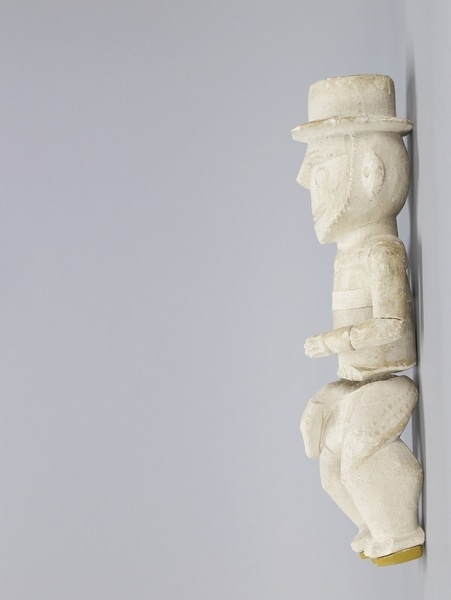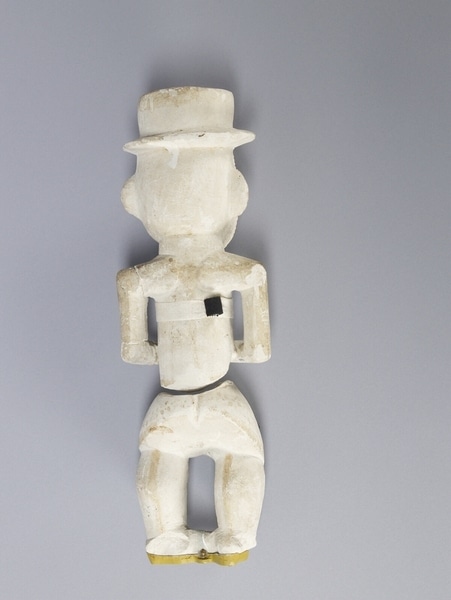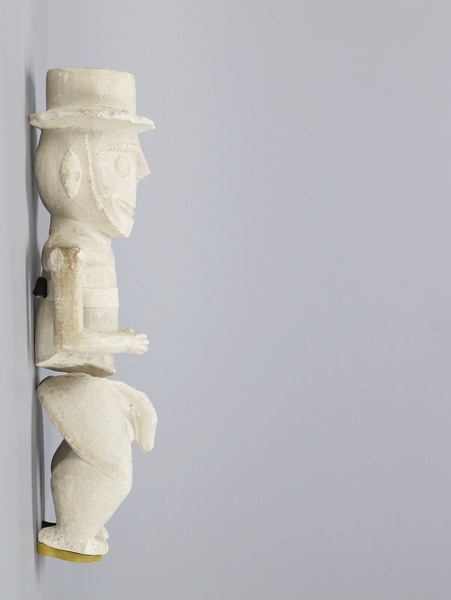Ancestor Figure Item Number: C379 a-b from the MOA: University of British Columbia




Description
Figure representing a full length nude male with a hat and a beard, Figure is broken near middle into two pieces, parts a-b. The hat is cylindrical with a wide brim. High forehead creating protruding notched eyebrows. A rounded triangular nose. Circular eyes. Grooved slightly upturned oval mouth outlined. Notched effect around the sides of the face, and the chin. From the square shoulders, the thin arms are straight at the sides until they are bent at the elbows so that the hands are touching each other at the front. Has genatalia, rounded buttocks, legs with crease-pointed knees, and stubby feet. Has a metal base.
History Of Use
According to Burnett, the use of these figures was as follows: "on the death of any member of a Chief's family one of the men ... goes to the bush tribe that live in the Rossel Mountains and obtains a chalk figure of either a man or a woman, according to the sex of the deceased, with which he returns to his village and with great secrecy gives it to a Chief ... by whom it is then placed in a Toberran House or Mortuary Chapel. If this is not done the spirit of the departed, being without an habitation on this earth, will haunt the survivors of its late family and inflict upon them some evil. Women are never allowed to go near or look upon these figures, it being death for them to do so. The chalk of which these figures are composed and which is found at the summit of the Rossel Mountains, is the sole deposit of that material found in the South Pacific."
Narrative
When the funerary rituals using these figures were complete they were normally destroyed, however during the colonial years they were also sold to westerners.
Item History
- Made in New Ireland, Papua New Guinea before 1927
- Collected between 1895 and 1927
- Owned by Frank Burnett before 1927
- Received from Frank Burnett (Donor) on July 25, 1927
What
- Name
- Ancestor Figure
- Identification Number
- C379 a-b
- Type of Item
- figure
- Material
- chalk stone
- Manufacturing Technique
- carved
- Part A
- height 23.8 cm, width 11.7 cm, depth 9.5 cm
- Part B
- height 13.5 cm, width 10.3 cm, depth 9.7 cm
- Overall
- height 37.4 cm, width 11.7 cm, depth 9.7 cm
Who
- Culture
- Western Melanesia
- Previous Owner
- Frank Burnett
- Received from
- Frank Burnett (Donor)
Where
- Holding Institution
- MOA: University of British Columbia
- Made in
- New Ireland, Papua New Guinea
When
- Creation Date
- before 1927
- Collection Date
- between 1895 and 1927
- Ownership Date
- before 1927
- Acquisition Date
- on July 25, 1927
Other
- Item Classes
- carvings & sculpture
- Condition
- poor
- Accession Number
- 2191/0765 a-b